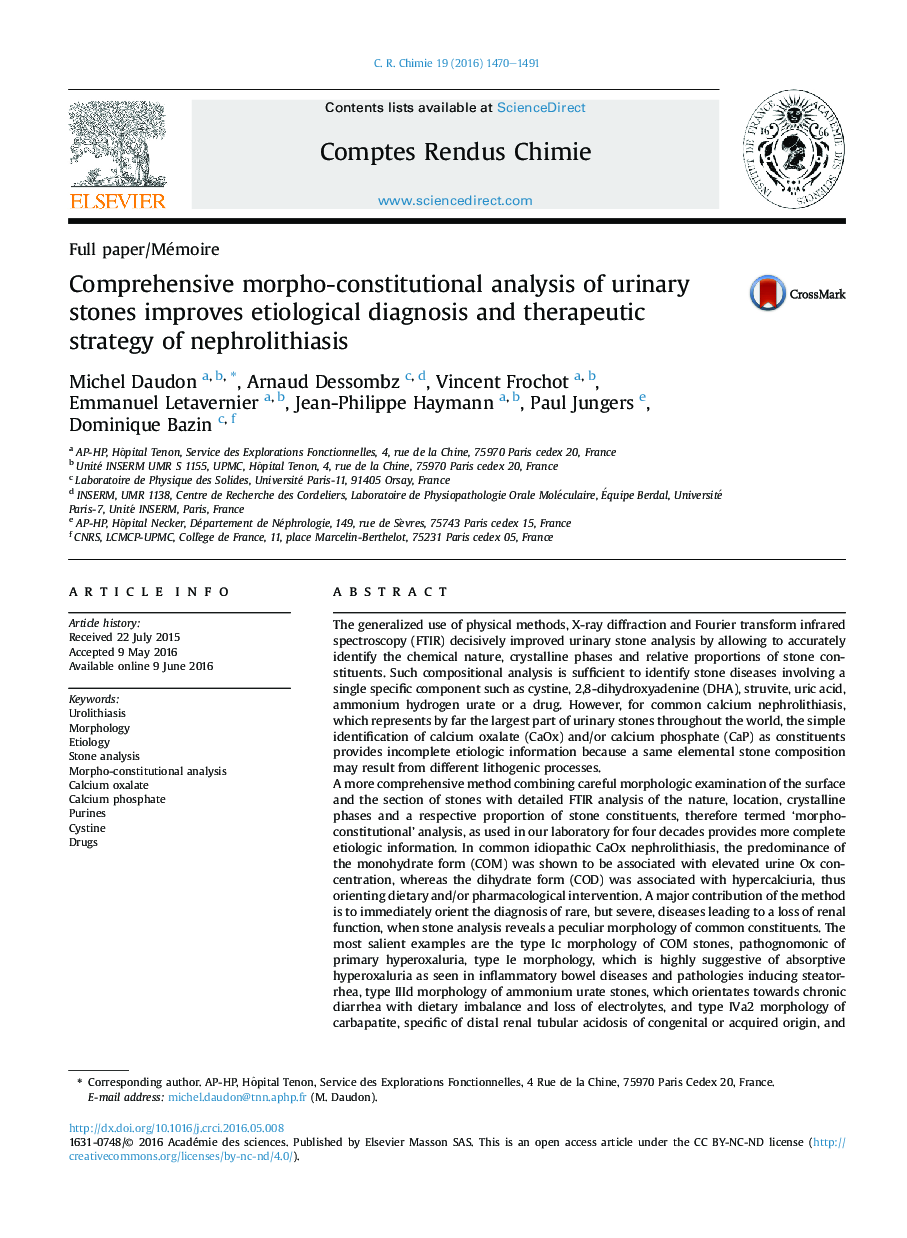| کد مقاله | کد نشریه | سال انتشار | مقاله انگلیسی | نسخه تمام متن |
|---|---|---|---|---|
| 6468941 | 458374 | 2016 | 22 صفحه PDF | دانلود رایگان |
The generalized use of physical methods, X-ray diffraction and Fourier transform infrared spectroscopy (FTIR) decisively improved urinary stone analysis by allowing to accurately identify the chemical nature, crystalline phases and relative proportions of stone constituents. Such compositional analysis is sufficient to identify stone diseases involving a single specific component such as cystine, 2,8-dihydroxyadenine (DHA), struvite, uric acid, ammonium hydrogen urate or a drug. However, for common calcium nephrolithiasis, which represents by far the largest part of urinary stones throughout the world, the simple identification of calcium oxalate (CaOx) and/or calcium phosphate (CaP) as constituents provides incomplete etiologic information because a same elemental stone composition may result from different lithogenic processes.A more comprehensive method combining careful morphologic examination of the surface and the section of stones with detailed FTIR analysis of the nature, location, crystalline phases and a respective proportion of stone constituents, therefore termed 'morpho-constitutional' analysis, as used in our laboratory for four decades provides more complete etiologic information. In common idiopathic CaOx nephrolithiasis, the predominance of the monohydrate form (COM) was shown to be associated with elevated urine Ox concentration, whereas the dihydrate form (COD) was associated with hypercalciuria, thus orienting dietary and/or pharmacological intervention. A major contribution of the method is to immediately orient the diagnosis of rare, but severe, diseases leading to a loss of renal function, when stone analysis reveals a peculiar morphology of common constituents. The most salient examples are the type Ic morphology of COM stones, pathognomonic of primary hyperoxaluria, type Ie morphology, which is highly suggestive of absorptive hyperoxaluria as seen in inflammatory bowel diseases and pathologies inducing steatorrhea, type IIId morphology of ammonium urate stones, which orientates towards chronic diarrhea with dietary imbalance and loss of electrolytes, and type IVa2 morphology of carbapatite, specific of distal renal tubular acidosis of congenital or acquired origin, and distinctive aspect of 2,8-DHA stones. In conclusion, the proposed morpho-constitutional method should be recommended for routine stone analysis, inasmuch as it is simple, rapid, reliable, clinically relevant and cost-effective.
Journal: Comptes Rendus Chimie - Volume 19, Issues 11â12, NovemberâDecember 2016, Pages 1470-1491
